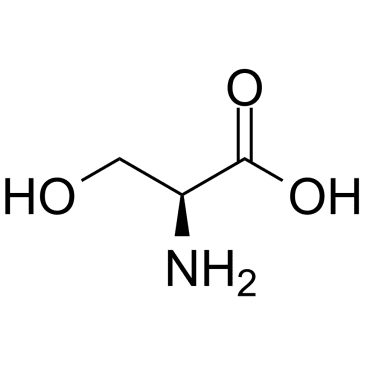Contents
It is one of the most important amino acids in the human body. It is involved in the production of cellular energy. The first mention of serine is associated with the name of E. Kramer, who in 1865 isolated this amino acid from silk threads produced by a silkworm.
Serine rich foods:
General characteristics of serine
Serine belongs to the group of nonessential amino acids and can be formed from 3-phosphoglycerate. Serine has the properties of amino acids and alcohols. It plays an important role in the catalytic activity of many protein-degrading enzymes.
In addition, this amino acid takes an active part in the synthesis of other amino acids: glycine, cysteine, methionine and tryptophan. Serine exists in the form of two optical isomers, L and D. 6. In the process of biochemical transformation in the body, serine is converted to pyruvic acid.
Serine is found in proteins in the brain (including the nerve sheath). It is used as a moisturizing component in the production of cosmetic creams. Participates in the construction of natural proteins, strengthens the immune system, providing it with antibodies. In addition, it is involved in the transmission of nerve impulses to the brain, in particular to the hypothalamus.
Daily Serine Requirement
The daily requirement for serine for an adult is 3 grams. Serine should be taken between meals. This is due to the fact that it is able to increase blood glucose levels. It should be borne in mind that serine is a replaceable amino acid, and it can be formed from other amino acids, as well as from sodium 3-phosphoglycerate.
Serine requirements increase:
- with diseases associated with a decrease in immunity;
- with weakening of memory. With age, serine synthesis decreases, therefore, to improve mental performance, it must be obtained from foods rich in this amino acid;
- with diseases during which the production of hemoglobin decreases;
- with iron deficiency anemia.
The need for serine decreases:
- with epileptic seizures;
- with organic diseases of the central nervous system;
- chronic heart failure;
- with mental disorders, manifested by anxiety, depression, manic-depression psychosis, etc.;
- in case of chronic renal failure;
- with alcoholism of the first and second degrees.
Serine assimilation
Serine is well absorbed. At the same time, it actively interacts with taste buds, thanks to which our brain gets a more complete picture of what exactly we are eating.
Useful properties of serine and its effect on the body
Serine regulates muscle cortisol levels. At the same time, the muscles retain their tone and structure, and also do not undergo destruction. Creates antibodies and immunoglobulins, thereby forming the body’s immune system.
Participates in the synthesis of glycogen, accumulating it in the liver.
Normalizes thought processes, as well as the functioning of the brain.
Phosphatidylserine (a special form of serine) has a therapeutic effect on metabolic sleep and mood disorders.
Interaction with other elements:
In our body, serine can be converted from glycine and pyruvate. In addition, there is the possibility of a reverse reaction, as a result of which the serine can become pyruvate again. In this case, serine is also involved in the construction of almost all natural proteins. In addition, serine itself has the ability to interact with proteins to form complex compounds.
Signs of a lack of serine in the body
- weakening of memory;
- Alzheimer’s disease;
- depressive state;
- decrease in working capacity.
Signs of excess serine in the body
- hyperactivity of the nervous system;
- high hemoglobin levels;
- elevated blood glucose levels.
Serine for beauty and health
Serine plays an important role in the structuring of proteins, has a beneficial effect on the nervous system, so it can be ranked among the amino acids that our body needs for beauty. After all, a healthy nervous system allows us to feel better, and therefore look better, the presence of a sufficient amount of protein in the body makes the skin turgor and velvety.










